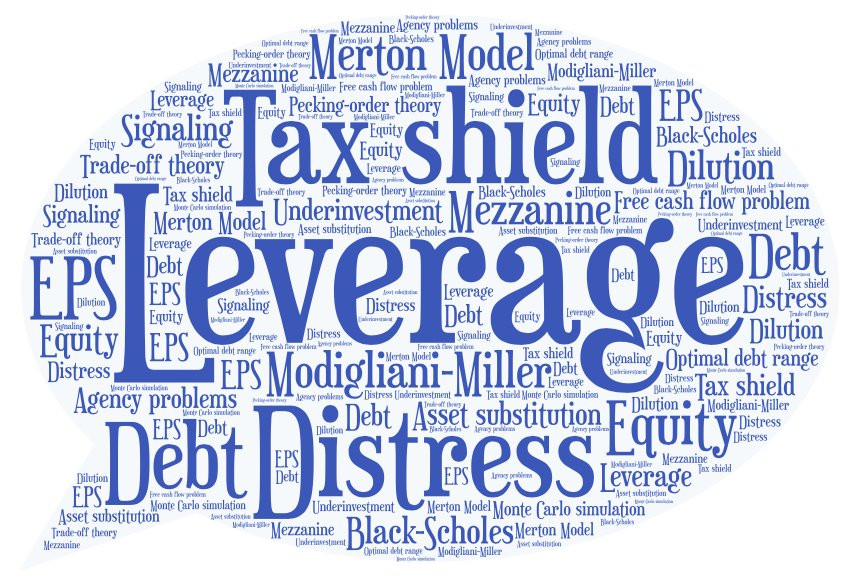Module Structure
Completion requirements
How to use financial decision making to improve (or protect) firm value? This is the core question of the module "Capital Structure." At the surface, the firm's financing policy deals with the its mix of debt and equity. But there is much more to it. Financing decisions allocate the cash flows, control rights, and ownership of the firm's resources. Thereby, they allocate the financial value of the firm and determine the incentives of the involved parties.

This module looks at the basic principles of capital structure choices:
- We start with a broad overview of the various sources and uses of funds. How do firm's finance their activities? And how do we assess the healthiness of a firm's financing policy? These are the two main questions of the first section.
- Then we turn to the question whether financing decisions matter. We analyze this question in a "perfect" world and see that, in principle, financing is irrelevant (Modigliani-Miller Propositions).
- In reality, however, financing matters. In a third step, we see that tax considerations favour debt financing over equity financing. We learn how to quantify value impact of these tax effects and their relevance for the cost of capital.
- Having learned that different capital structures have different value implications, we investigate how firms can actually adjust their financing policy and how that affects value. Among other things, we study share repurchases and dividend payments.
- Next, we take a closer look at the economics of debt and equity. These considerations have far-reaching implications for the incentives of debt- and equity holders as well as the valuation of these securities (Merton model).
- Finally, we complete the discussion about the various costs and benefits of debt financing. We present the most prominent capital structure theories and show how to use Monte Carlo Simulation to try and find a firm's optimal leverage range.
Last modified: Monday, 12 November 2018, 8:23 AM
